THE BEST CARBON ROAD BIKE WHEELS

Cycling enthusiasts want to ride the best carbon road bike wheels. I’ll tell you which are the best we’ve tested at three price tiers for different types of riding and what performance characteristics matter most when choosing between them.
TL;DR (click for more)
- Today’s carbon road bike wheels fall into three price tiers – Value: US$900/£750/€900 to $1500/£1300/€1500, Performance: US$2000/£1600/€2000 to $3000/£2300/€3000, and Premium: US$3000/£2300/€3000 and up. Noticeable performance and distinctive attributes increase from one tier to the next.
- Actual road performance, not product specs, is the primary consideration when choosing wheels within each price tier. A wheelset’s versatility, specificity, aero drag, sidewind stability, lateral stiffness, vertical compliance, responsiveness, and durability matter most in judging its performance.
- Despite how many wheelsets are marketed, the design, materials, and manufacturing of rims determine performance more than differences among hubs and spokes, which are often more responsible for how the wheelset is priced.
- As with most consumer products, road bike wheel prices are based on what cycling consumers are willing to pay rather than actual costs. Rim materials and labor are the largest overall cost components. Distribution cost differences between smaller, direct-to-consumer wheelset suppliers and larger, multichannel ones are less significant.
- The best-performing all-around road bike wheels we’ve tested are the Bontrager Pro 37 TLR (Value tier), Zipp 303 S (Value tier), Elitewheels Drive 50D (Value tier), ENVE SES 4.5 (Performance tier), and Zipp 454 NSW (Premium tier).
- The best-performing aero wheels we’ve tested are the Reserve 52|63 (Value tier), Bontrager Aeolus RSL 62 (Performance tier), and ENVE SES 6.7 (Performance tier)
- The best-performing climbing wheels we’ve tested are the Elitewheels Drive 50D (Value tier) and Roval Terra CLX II (Performance tier).
- The best-performing all-road wheels we’ve tested for riding on either road or gravel are the ENVE SES 4.5 (Performance tier) and Roval Terra CLX II (Performance tier).
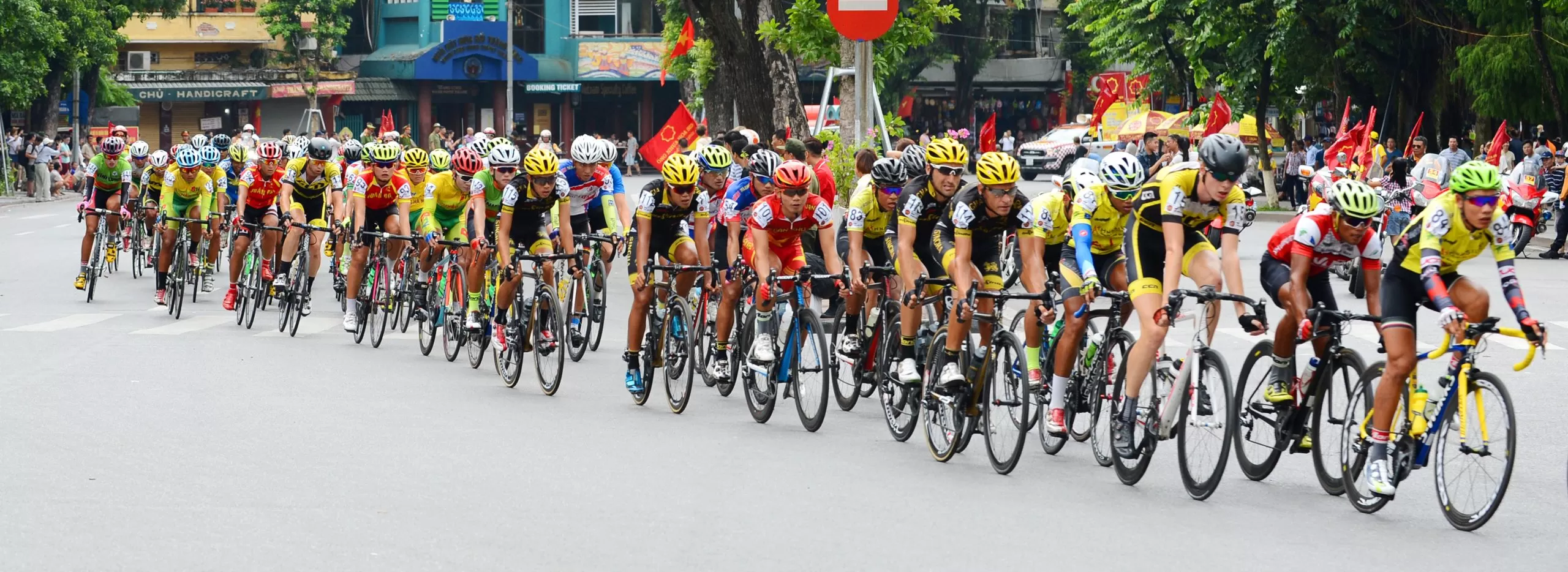
Related Reviews:
How Wide Wheels and Tires Can Make You Faster
How to Choose the Best Wheelset for You
PRICE TIERS
The price of most carbon road bike wheels fall into one of three tiers:
* Value – US$900/£750/€900 to $1500/£1300/€1500. For recreational riders and cycling enthusiasts who want carbon wheels and prioritize price over everything else.
* Performance – US$2000/£1600/€2000 to $3000/£2300/€3000. For cycling enthusiasts and racers who want road bike wheelset performance that helps achieve their cycling goals.
* Premium – US$3000/£2300/€3000 and up. For cycling enthusiasts and racers who value distinctive product and brand attributes in addition to performance.
Of course, wheels selling within a price tier don’t all perform the same or are made from similar product materials, components, designs, and manufacturing processes.
And despite what some suppliers claim, my fellow In The Know Cycling testers and I haven’t yet found carbon wheels in the Value tier that perform on par with the better Performance tier ones. (We keep testing new ones in hopes we’ll find one.)
But, there are Premium tier wheels that perform no better than Performance ones and some Performance tier wheels that aren’t much better than Value wheels.
Those eagle-eyed among you may wonder, “What about wheels priced between the Value and Performance tiers?” While there are exceptions, most of those we’ve tested are either overpriced Value carbon wheels or outdated Performance tier road bike wheels.
Why In The Know Cycling exists: My fellow testers and I, with careers outside the cycling world, do comprehensive, comparative, and independent analyses and gear performance reviews to determine what gear is best for us and you on an ad-free, subscription-free, reader-supported platform.
PERFORMANCE
Performance, not specs determines how wheels ride on the road. From our testing, these are the performance characteristics we’ve found matter most to the riding experience.
* Versatility and Specificity – How well your wheels are suited for various riding situations or dedicated to specific ones, from flat to climbing terrain, smooth to rough surfaces, and endurance rides to racing.
* Aero Drag and Sidewind Stability – How efficiently they maintain your momentum going down the road with little to no wind and with steady or gusty winds coming from a few degrees off-center to from all sides.
* Lateral Stiffness and Vertical Compliance – How stout and precise they remain as you do a hard acceleration, go up a steep pitch, or lean into a corner while being comfortable with the right set of tires and inflation pressure.
* Responsiveness and Durability – How lively and light they feel as you accelerate and handle your bike at different speeds, across varying terrain, and through various cornering situations while remaining intact after hard impacts and over their lifetime.
I list these in pairs because making wheels to optimize the performance of one criterion in the pair can compromise the performance level of the other.
For example:
- Versatile road bike wheels that perform well across many riding situations usually aren’t the best performers in specific cycling disciplines like climbing, time trials, or criteriums.
- Carbon wheel rim shapes optimized to reduce aero drag usually aren’t among the most stable in strong side winds and vice versa.
- Some laterally stiff wheels can be harsh, even with wide tires at low inflation pressures.
- Making carbon wheels exceptionally light can also make them prone to cracking while building them to endure hard impacts can make them heavier.
With Value carbon road bike wheels, you live with most of these trade-offs. Additionally, the performance level of Value carbon wheels on any of these criteria is typically not as high as those of Performance or Premium wheels.
But, you buy Value bike wheels because you care about price more than performance. And, if you are more of a recreational rider, you may not notice the performance differences in the way those who ride more often and harder will.
Performance tier wheelsets reduce these trade-offs, provide more balance, and deliver performance levels as good as they get on most criteria. You’ll ride faster with the same amount of effort or as fast with less effort than on a similar depth Value wheelset.
Premium tier road bike wheels can be marginally better for race-specific events like alpine climbs or time trials. This adds to the brand and price cache or the unique rim, hub, or spoke characteristics that attract many to wheels in this price tier.
Premium wheels may also include technologies not found in less expensive wheels. Some of these technologies deliver superior performance across one or more criteria. Others capture attention but deliver no better performance.
COMPONENTS
The bottom line right off the top:
- Rim profile is the most important part of a wheelset’s contribution to your speed and efficiency. Its shape, depth, and width determine its aerodynamic drag and sidewind stability.
With each new generation of wheels, incremental drag reduction and stability improvements are made.
Those advances show up first in Premium and Performance tier carbon wheels.
- Some companies that make these upper-price tier wheels use the same rim profile with different materials or components in their Value wheels.
- Others use different profiles in their Value wheels than in their Premium and Performance wheels.
But, rim profiles are easily copied and quickly imitated in Value wheels – often within a couple of years – by companies that don’t compete in the higher-priced tiers and don’t do much or any R&D.
A material advantage: Higher strength-to-weight carbon materials cut into more functionally-specific pieces (or “plies”) and more purposefully located, make the rims of Premium and Performance tier wheels lighter, more responsive, and more durable.
- It’s an advantage that separates them from Value carbon wheels with similar rim profiles.
Some Premium tier wheels take the materials technology and rim manufacturing a step beyond Performance-priced ones to create even lighter and uniquely profiled rims.
Hubs are often the center of product attention:
- Each increase in price tier typically gets some combination of a lighter hubset, more durable bearings (carbide to stainless to ceramic), better seals, and more points of engagement.
But, when it comes to improved rolling efficiency (the number of watts needed for the same speed):
- Rim weight matters more than hub weight.
- Bearing grade matters more than bearing material.
- More points of engagement matter little in road cycling.
Spoke material (steel, aluminum, composite), shape (round or bladed), thickness, butting (two or more distinct diameters/thicknesses), and lacing (how spokes are crossed) can get more refined with each jump in carbon wheelset price tier. Aero drag, stiffness, compliance, responsiveness, and durability can be affected.
But the performance benefits of spokes more advanced than those used in Value-priced carbon wheels are relatively small to insignificant.
- Spoke differences may provide more marketing benefits than performance gains. Some, like higher-priced carbon spokes, may improve stiffness but reduce comfort.
Finishes and graphics vary between wheels, but it’s hard to see a direct correlation to price tier. However, riders motivated to ride faster by the look of their wheels may achieve higher performance levels than those who aren’t. 🙂
Find what you're looking for at In The Know Cycling's Know's Shop
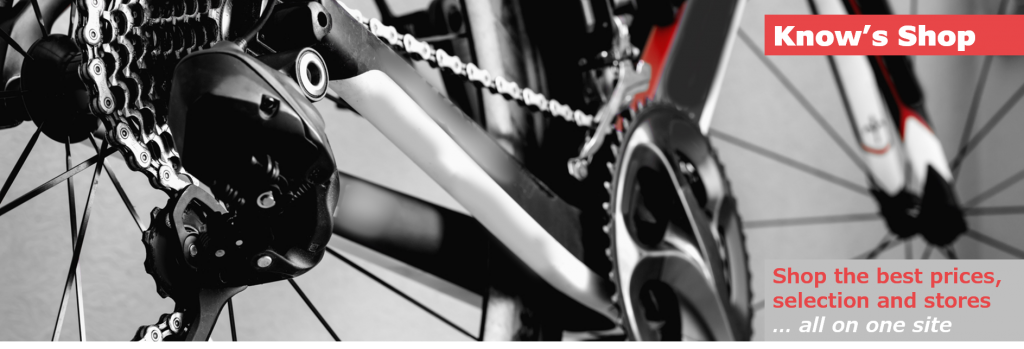
- Compare prices on in-stock cycling gear at 15 of my top-ranked stores
- Choose from over 75,000 bikes, wheels, components, clothing, electronics, and other kit
- Save money and time while supporting the site when you buy at a store after clicking on a link
PRICES AND COSTS
My interviews for this post with companies making wheels at each price level affirmed some common truths about prices and revealed realities about costs.
The big picture: As with most products in the cycling industry and commercial markets, carbon road bike wheel prices are set by what customers are willing to pay, not by a product’s cost.
Wheel suppliers start with a price target and work backward through their cost structure to engineer, source, make, sell, and service the product to give them the returns they and their partners need to make.
It’s not what you may have thought: In carbon wheels, rim materials are the biggest cost component. Labor is the next largest cost. This relationship holds regardless of price tier or where the wheels are made.
- Premium and Performance tier wheels require considerably more labor to lay up their rims and use far more carbon plies that require more manufacturing precision than those of Value carbon wheels.
- Yet, the carbon material costs that go into those higher-priced wheels are still higher than the added labor cost to make them.
Hubs, spokes, finishes, labels, warranty, tool amortization, and other direct costs are far less than rim materials and labor. The gap between the rim and other component costs is even greater with higher-price tier wheels.
At the companies I spoke with, engineering and other indirect costs are not assigned to individual product lines even though the bulk of R&D goes into Premium and Performance tier wheels but may be used in Value tier products in the future by the same company.
Companies that make OE (original equipment) wheels for new bikes benefit from the added volume to reduce the costs of their after-market wheels.
The origin story and new reality: The direct-to-consumer sales model that bypasses distributors and retailers and their mark-ups allowed new brands and overseas manufacturers to create a market for Value priced carbon road bike wheels to serve the previously unmet need of a segment of cyclists.
- However, the added requirements of warehousing, marketing, sales, and service these new brands require to compete with established ones who make wheels at higher volume levels, and the added tariffs and shipping fees on manufacturers selling from overseas factories have significantly increased their costs.
- At the same time, larger, established brands are now competing in the Value price tier and leveraging high-volume materials and manufacturing techniques along with established rim designs to reduce their costs greatly. Their distributors and retailers take on the inventory, sales, and service costs that direct-to-consumer brands also incur.
- Today, competition between direct-to-consumer brands and established ones using a distribution model happens mainly in the Value segment at prices usually US$300/£150/€300 or less apart for similarly speced carbon wheelsets. It’s not an insignificant amount for the Value tier customer but far less than the price difference cyclists faced between established and newer brands in the past.
- Multichannel distribution – selling both direct and through distributors and retailers – is increasingly being used by the larger, established wheelset brands to serve customers where they want to be met while attempting to support their retail channel.
I didn’t forget: Regional brands, or those that design, make, and sell their wheels principally within the US, UK, Europe, or Australia, compete with road bike wheels mostly at Performance and Premium price tier levels.
Their higher costs from lower production volumes, either with a direct-to-consumer or distribution model, often push their prices into those tiers rather than their wheelsets’ competitive or superior performance or product designs.
In The Know Cycling is ad-free, subscription-free, and reader-supported. If you want to help keep it rolling without any added cost to you, buy your gear and kit after clicking the store links on the site. When you do, we may earn an affiliate commission that will help me cover the expenses to create and publish our independent, comprehensive, and comparative reviews. Thank you, Steve. Learn more.
REVIEWS
Below are summaries of our reviews of the best all-around, aero, and climbing carbon road disc wheels at different price levels, along with links to detailed reviews of those wheelsets and others we’ve rated them against.
Best All-Around Road Bike Wheels
The latest generation of all-around carbon road disc wheels are faster, more comfortable, and do more things well on a broader range of terrain than the best rim brake wheels and many of the earlier disc brake ones ever did.
ZIPP 454 NSW – BEST ALL-AROUND PREMIUM WHEELSET
If you don’t want to pick between wheels that would be fast on flats vs. on rolling hills vs. on climbs or in a training ride, group ride, road race, or crit, I recommend the latest Zipp 454 NSW Tubeless Disc-brake wheelset. It will be fast in all those situations and the fastest in many of them.
At US$4220/£3376/€3798, it better be. But if top performance in a single wheelset in nearly every situation and against nearly every criterion is essential to you, it just may be worth it.
It’s a stiff, deep (54.5 to 58.5mm), and light (1378 grams) wheelset. Those three attributes and the 454 NSW’s quick engaging rear hub make it so responsive that it redefines the term “snappy” and is an ideal breakaway partner from flats to all but the steepest of slopes.
Combine all of that with a very smooth rolling hubset, an almost silent and fast engaging freehub, and its varying depth rims, and you’ve got a unique riding and looking set of wheels.
You can buy the Zipp 454 NSW using these links to BTD (BikeTiresDirect) 10% off w/code ITK10, Competitive Cyclist, Performance Bike, and Sigma Sports, stores I recommended and rate highly for their prices, customer satisfaction, and support. You can also find it and compare prices using this link to Know’s Shop, which shows all the stores I recommend that carry this product.
See my full review and ratings of the Zipp 454 NSW.
ENVE 4.5 – BEST ALL-AROUND PERFORMANCE WHEELSET
The ENVE SES excels on nearly as many performance criteria as the Zipp 454 NSW, but at US$2850/£2850 costs a good amount less, especially if you are paying in US Dollars.
It’s also a better bet if you want one wheelset for paved roads and those long flat, and rolling dirt or gravel ones. It feels as fast or faster on flat, rolling, and descending terrain, as comfortable on good roads, and more comfortable on rough roads and unpaved paths than any other carbon disc wheelset I’ve evaluated.
You can order it using these links to recommended stores BTD (BikeTiresDirect) 10% off w/code ITK10, Competitive Cyclist, Performance Bike, Merlin, and Sigma Sports.
See my full review and ratings of the ENVE SES 4.5.
BONTRAGER PRO 37 TLR – BEST ALL-AROUND VALUE WHEELSET
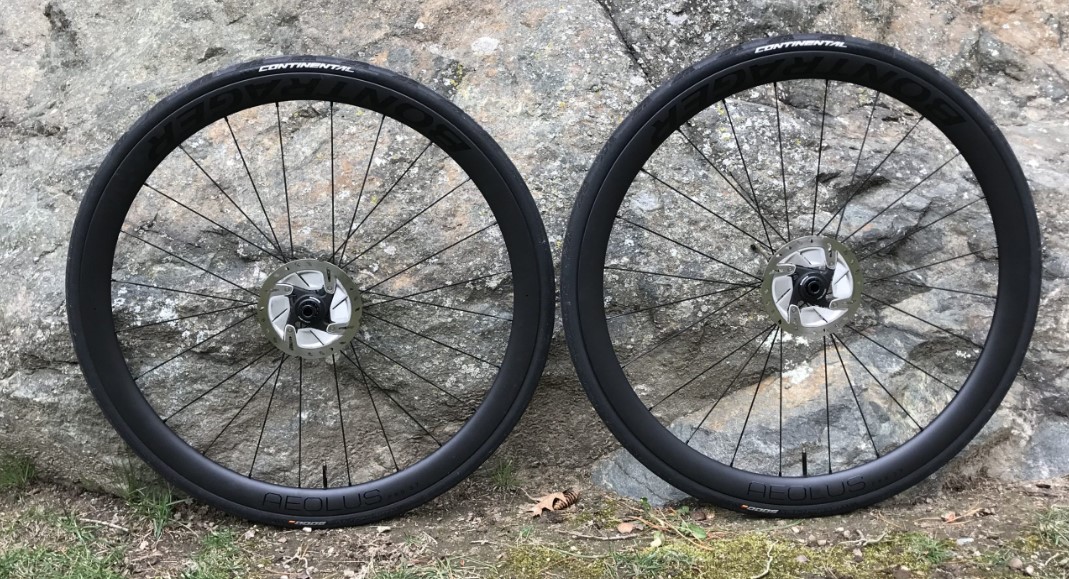
The Bontrager Aeolus Pro 37 is a wheelset that seems as if it was designed for the value-carbon road disc rider from the get-go. It is a capable performer in all the key areas I look for in an all-around road disc wheelset.
“Capable performer” may read like a backhanded compliment. I don’t intend it to be. It’s just that nearly all the wheelsets in the value-carbon category have one or more major performance weaknesses that limit what you can do with them, and this Bontrager doesn’t.
It also has hooked rims that allow you to use conventional clincher tires with tubes or tubeless ones, whichever you prefer. If you prefer to go tubeless, tape the rims rather than using the plastic rim strips that come with the wheels, as it will save you 120 grams.
While the Aeolus Pro 37 doesn’t perform at the level of US$,£,€2000 and up carbon road disc wheelsets, its ride gave me equal or better performance across my evaluation criteria compared to other wheelsets I’ve tested within hailing distance of the Aeolus Pro 37’s US$1500/£1350/€1750 price.
It’s available directly from Bontrager and Sigma Sports.
See my full review of the Pro 37 TLR and other value carbon wheels.
ZIPP 303 S – BEST ALL-AROUND VALUE WHEELSET
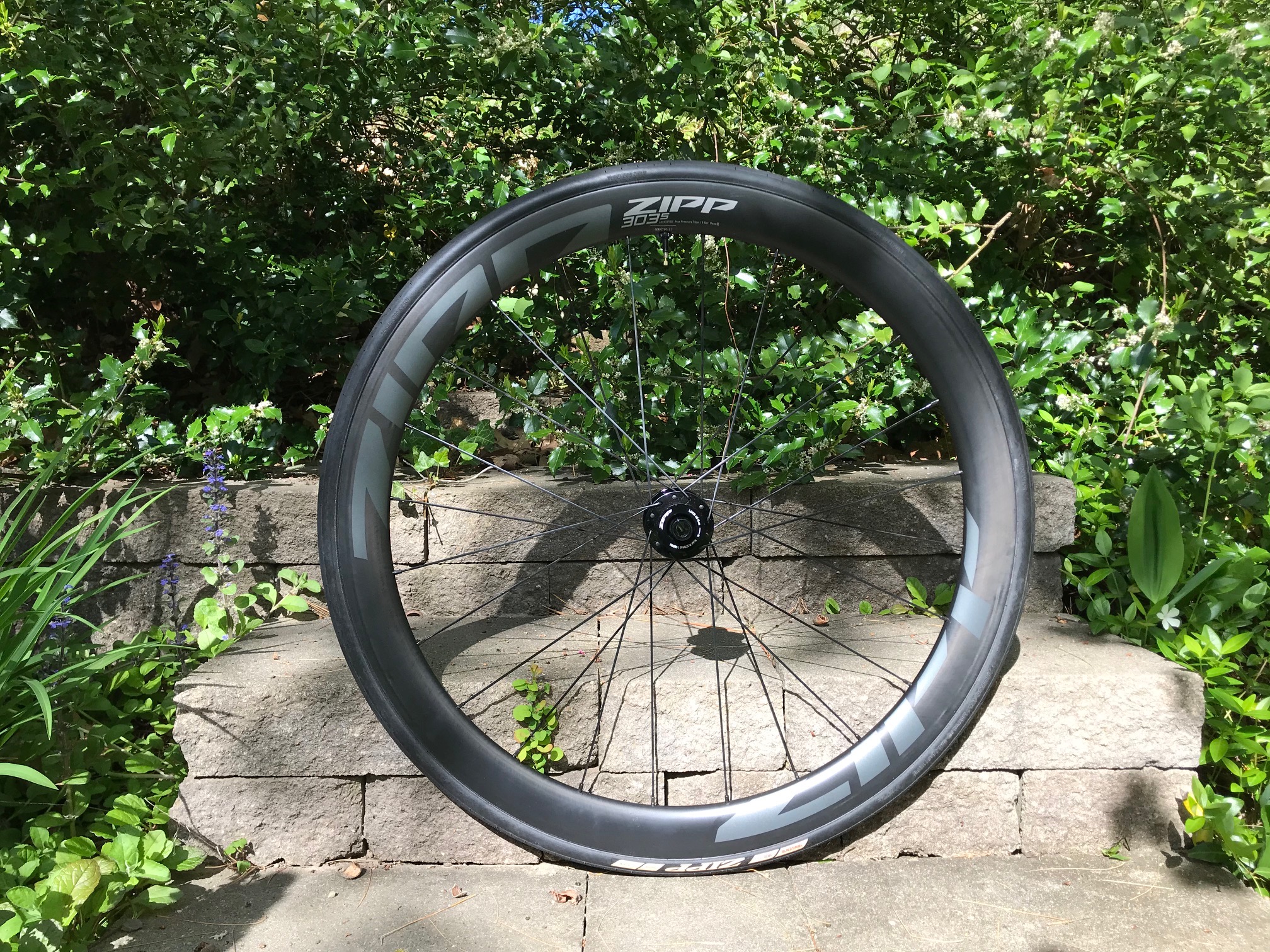
If the Zipp 303 S Tubeless Disc-Brake wheelset didn’t have the Zipp logo on the side of its rims, I wouldn’t have guessed it was from Zipp. Its price is very un-Zipp-like, and the combination of better-than-average lateral stiffness and average vertical compliance (aka comfort) is the opposite of almost every set of Zipp wheels I’ve ever ridden that tend to be super comfortable but not as stiff as the rest.
The high lateral stiffness is certainly welcome and translates to good handling in these wheels and effective climbing for a wheelset of its weight.
Less than Zipp-like comfort in the 303 S isn’t a knock, and it’s certainly not an issue. These are more like the comfort of the average mid-depth carbon wheelset. I did many 50-mile rides on them without any compliance-induced fatigue. It’s just that I had just gotten used to Zipp wheels being supremely comfortable.
These wheels have hookless rims that require you to use tubeless tires. Most of the better tubeless tires are hookless compatible, and even 200lb/90kg riders needn’t inflate 28mm tires above the recommended 72.5 psi/5 bar maximum inflation pressure.
Listing for US$1400, £1090, €1320 but often selling for less, you can order it using these links to BTD (BikeTiresDirect) 10% off w/code ITK10, Competitive Cyclist, Performance Bike, Merlin, and Sigma Sports.
See my full review of the Zipp 303S and other value carbon wheels.
ELITEWHEELS DRIVE 50D – BEST ALL-AROUND VALUE WHEELSET
While all wheelsets perform differently, the Elitewheels Drive 50D wheelset stands out as the only serious climber among the all-around value carbon wheels we’ve tested.
Its combination of stiffness and low weight really comes through riding up steep pitches and across rolling terrain.
While it’s not on par with lighter, more expensive, dedicated climbing wheels, these Elitewheels are notably better on this kind of variable-grade terrain than anything else we’ve tested in the value carbon wheelset price range.
As an all-arounder, and compared to other value carbon wheels, it performs on par with most in this price range and among the best in some ways.
The Drive 50D is one of the most responsive value carbon wheelsets we’ve tested. It accelerates almost as if reading your mind; there’s no hesitation once you put your foot down. In a large group ride, when the pace can vary continuously, this performance characteristic can reduce the spikey power surges and cadence drags that might otherwise create more fatigue than you bargained for.
The wheelset is competitively priced at US$1189, £920, €1093 and is available using this link to Elitewheels. Using the code ITKCycling will give you a 15% discount, effectively reducing the price to US$1011, £782, €929.
See my full review of the Elitewheels Drive 50D and other value carbon wheels.
Best Aero Road Bike Wheels
Aero bike wheels look fast, ride fast, and race fast. At 55mm to 65mm deep, they are the wheels of choice for most flat and rolling terrain for those who ride at average speeds well above 20mph/32kph. They are well suited for road races and crits, and can also work as time trial and triathlon wheels.
BONTRAGER AEOLUS RSL 62 – BEST AERO PERFORMANCE WHEELSET
The Bontrager Aeolus RSL 62 operates best in the aero lane and does it with stability in side winds and comfort across all paved surfaces better than most we’ve reviewed in this category.
Their stiffness, responsiveness, and ability to maintain momentum are on par with other aero wheelsets, while their wider rims handle a 28mm tire without compromising aero performance.
Selling for US$2700/£2200/€2840, you can order the RSL 62 directly from the Bontrager site and Sigma Sports.
Read my full review of the Bontrager Aeolus RSL 62 and comparisons to other aero wheels.
ENVE SES 6.7 – BEST AERO PERFORMANCE WHEELSET
If TTs and triathlons are your jam or you just like to ride fast where it’s mostly flat, somewhat windy, and on less-than-perfect roads, the SES 6.7 is going to be one of the faster aero and lower rolling resistance wheelset choices and one of two overall best performers in the aero wheelset category available to you.
On more variable terrain, ones with short, punchy climbs, or in situations where quick accelerations are key to closing or opening gaps, the SES 6.7 would take much more work than riders around you on shallower, more responsive wheels.
You can order the ENVE SES 6.7 at stores I recommend for US$2850, £3300, €4000 by using these links to BTD (BikeTiresDirect) 10% off w/code ITK10, Competitive Cyclist, Performance Bike, Merlin, and Sigma Sports.
Read my full review of the ENVE SES 6.7 wheelset.
RESERVE 52|63 – BEST AERO VALUE WHEELSET
The Reserve 52|63 aero wheelset has a clear priority – go fast on flat terrain.
That’s what Miles experienced when he rode this wheelset on his Propel in a straight line, going down rollers, and through corners. He could start a descent at the back of a group, not even pedal, and float by everyone ahead of him, even grabbing the brakes along the way.
I rode the 52|63 on the new Trek Madone Generation 8 light aero bike, replacing the similarly priced Bontrager Aeolus Pro 51 stock wheels. The increased speed with the Reserves was immediately and consistently noticeable whenever I rode on flatter terrain.
It’s also a great comparative value at US$1600, £1600, and €1800 when built with the DT Swiss 350 hubset in the wheelset we tested.
You can order them from BTD (BikeTiresDirect) 10% off w/code ITK10, Competitive Cyclist, and Sigma Sports.
Read my full review of the Reserve 52|63.
Best Climbing Road Bike Wheels
Climbing wheels are for long rides centered on climbing up and down average gradients of 7% and steeper pitches that go on for kilometers or miles at a time.
The best climbing wheels are stiff, aerodynamic, comfortable, and light. Those characteristics will help you convert your power and hard work as efficiently as possible going up while confidently handling the high speeds and frequent cornering coming down.
ROVAL TERRA CLX II – BEST CLIMBING PERFORMANCE WHEELSET
While the Roval Terra CLX II is a versatile road and gravel wheelset, it’s the best road climbing wheelset we’ve tested and the least expensive in US dollars among the top performers in this category. Roval also makes the Alpinist, its designated climbing wheelset, but the Terra (1278g on my scale with an HG freehub) is just as light and has wider rims, allowing you to run wider tires for more comfort without any aero loss.
Yet, despite their weight and relatively low profile (33.0mm measured), they are also great all-around road and racing wheels. With 28mm Continental Grand Prix 5000 S TR tires inflated in the low 50psi range (25.3mm internal width, 68kg rider weight), you’ve got a race-ready setup.
Stiff, responsive, and compliant, they handle better than most riding switchbacks or just freewheeling downhill at high speed. The DT Swiss 180 EXP hub is also a smooth, quiet partner.
At US$2500, £2500, or €2850 retail price, while not cheap, you can order the Roval Terra CLX II through these links to Competitive Cyclist and Performance Bike.
See my full review and ratings of the Roval Terra CLX II and other climbing wheels.
ABOUT THE BEST LIST
Yes, wheels from just a few brands – Zipp, ENVE, Roval, Bontrager, Reserve, and Elitewheels – are on this “best” list. While we’ve tested wheels from over 20 other well-known and lesser-known brands, you may be wondering why those from relatively few.
Fair question. Here’s the process.
While wheelset evaluations are, by their nature, subjective, we use a process that makes each wheelset earn its position based on its merits.
- Several of us ride and rate every wheelset and write up private notes. I then compile the notes, reconcile the ratings, and write the reviews.
- We use the performance criteria I described earlier and compare wheels against each other rather than opine on them in isolation.
- Specs, looks, origin stories, and other things that wheelmakers use to market wheels and play prominently in others’ reviews don’t enter into our ratings.
The cycling industry doesn’t support us. We don’t run advertisements, don’t publish content sponsored or written by or for bike companies, don’t go to cycling industry trade shows or product introduction trips, don’t work in bike shops or any cycling industry job, or ever have. We eliminate those things that could create a conflict of interest or make us feel obligated to “do a solid” for a brand or people we know connected to one.
I buy and sell or demo and return the wheels and other gear we test. We’re fully reader-supported by the commissions that come when you click on and buy your gear using one of the links to stores you see on the site. If you don’t trust our reviews or the stores we’ve recommended for their prices, selection, and customer satisfaction, you won’t and shouldn’t support us.
To paraphrase a line from one of my favorite public radio stations: I don’t publish reviews as an excuse to make money from ads and subscriptions; I raise money through store links so we can afford to buy, review and recommend the best gear for you.
* * * * *
Thank you for reading. Please let me know what you think of anything I’ve written or ask any questions you might have in the comments section below.
If you’ve benefited from this review and want to keep new ones coming, buy your gear and kit after clicking the store links in this review and others across the site. When you do, we may earn an affiliate commission that will help me cover the expenses to create and publish more ad-free, subscription-free, and reader-supported reviews that are independent, comprehensive, and comparative.
If you prefer to buy at other stores, you can still support the site by contributing here or buying anything through these links to eBay and Amazon.
You can use the popup form or the one at the bottom of the sidebar to get notified when new posts come out. To see what gear and kit we’re testing or have just reviewed, follow us using one of the links below.
Thanks, and enjoy your rides safely! Cheers, Steve
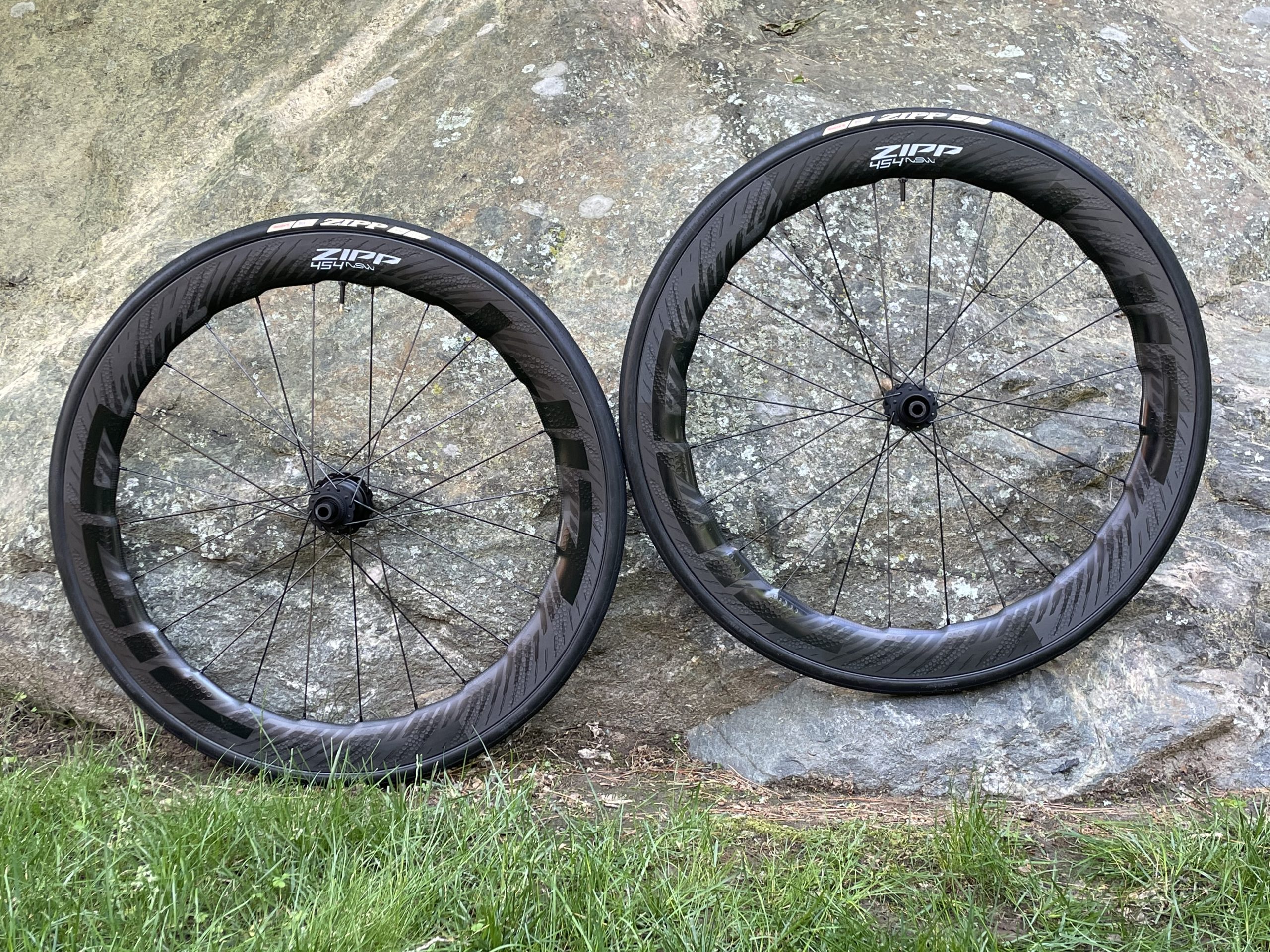
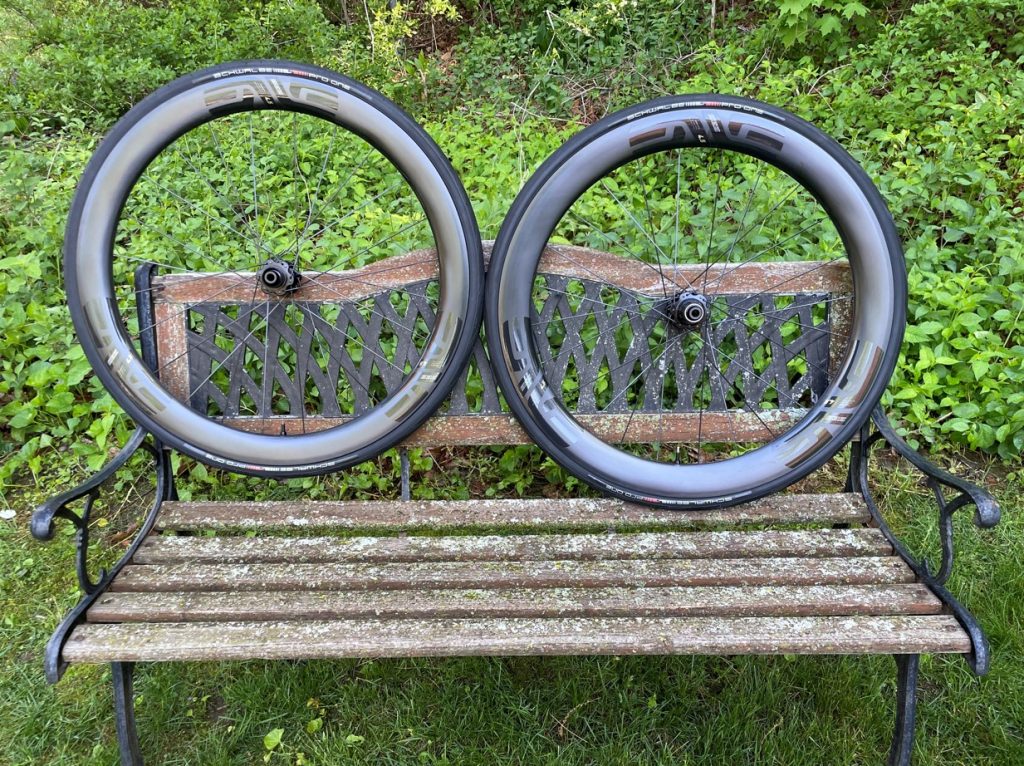
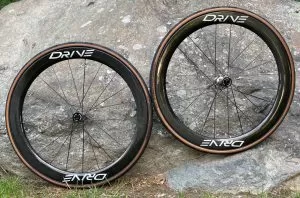
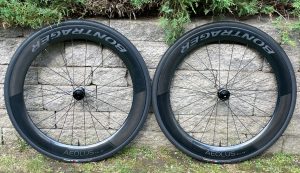
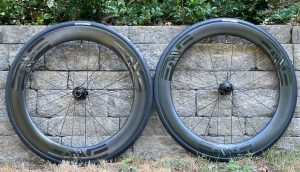

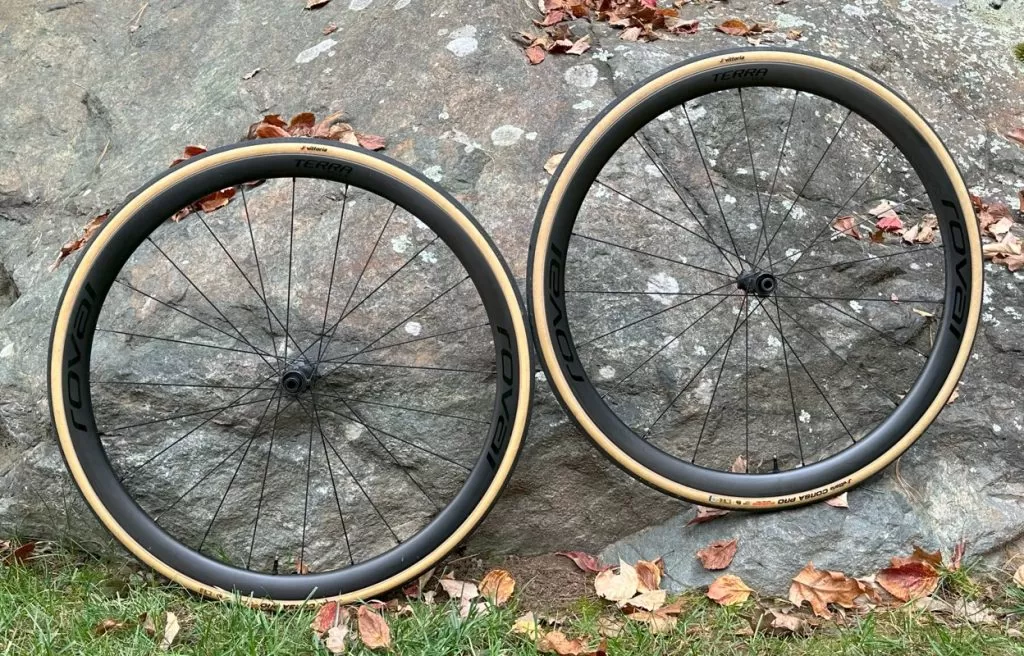
Hi Steve –
It’s such a difficult and expensive choice to commit to to a wheelset and your time evaluating them and clear reviews are so helpful. Thank you. Based on the above, I would not be a good match for the Enve 6.7’s because I live in a mountainous area with 100km and 1000-2000hm typical. I believe that Enve updated the SES 6.7 towards the end of 2022 and I’m just wondering if the changes bring them closer to my use case – specifically, I think the inner rim width is perfect for 25mm comfortable and 28mm curious types. In a separate comment you noted that an updated review is in work. Anyway, it seems unlikely the latest 6.7’s would become an ideal all-around road race wheel (I probably should choose between the 4.5’s and Zipp 454’s).
Yes. I agree.
I’d be interested in seeing Winspace wheels reviewed – I subscribe to Hambini’s youtube channel and he’s actually given them very high reviews (which he almost never does) against the premium wheels (basically saying the 50mm wheels perform as good or better than other brands 60-70mm wheels – including the top Zipp ones)- and they are priced at or below the value wheels. Seems like a hard-to-beat combination? My only skin in the game is that I’m thinking of picking up a set of wheels and the Winspace ones are very tempting.
I just discovered this site a few weeks ago and have been reading like crazy. I’m an avid cyclist and love this site.
However, I do have a couple questions regarding the above. You only mention DTSwiss in the context of their lower priced wheel sets at the end of the article. So are the other wheel sets better performers have you not tested any of the DTSwiss?
Along the same lines, no mention at all of Swissside? Same wheel as DTSwiss with a lower cost but still excellent hub.
From the reviews I’ve read they seem to test excellent at various yaw angles and in crosswinds? But their offerings have been on the market for at least 3 or 4 years so maybe the competition is better? You didn’t really address this above.
So are the wheels listed above actually better performers than DT or Swissside? Do we need to wait on updates from DTSwiss and Swissside (Same wheels basically)? Or have you simply not tested them?
Also, I’ve read some things about the Zipp NSW being one helluva gimmick vs actually improving performance. Can you point me towards some data or perhaps a review that shows how/why it’s actually beneficial?
I’m dabbling in the wheel market now to get something deeper than my existing 50mm wheels (thinking 60ish mm deep) on my Scott foil and I’ll move those to the gravel bike as training wheels.
Hi Trey, Welcome to the site. Appreciate your kind feedback and your questions about wheel brands that aren’t in this review. We’re testing the DT Swiss ERC 1400 45mm deep wheelset now. During the pandemic and until recently, I wasn’t able to source them here in the US. I have the DT Swiss ARC 62mm deep wheels on my wish list along with a couple of others at the bottom of my aero wheelset review https://intheknowcycling.com/aero-bike-wheels/. As you say, Swissside and DT Swiss aero wheels are the same or similar so testing one would tell you a lot about the other. Until recently though, they were quite narrow and a generation behind some of those we have reviewed. As to the NSW, no gimmick just very expensive for a particular level of performance and specificity that not everyone can justify. I reviewed them here https://intheknowcycling.com/zipp-454-nsw-review-zipp-353-nsw-review/ and they are compared to others in my all-around and climbing wheels (also all road wheelset) category wheelset reviews. Cheers, Steve
Thank you for the link to the NSW review, I’ll check it out and be in the lookout for your DTSwiss reviews as well.
Trey – I recently got a new bike and did an inordinate amount of wheel research, basically starting with EVERYTHING and narrowing it down to what I think I need/want/can afford(-ish).
The DTSwiss DiCut 1100 range seems too expensive for what it is (and as Steve said, a generation behind give or take), Swisside seems like they haven’t changed a thing since 2019-2020 model year (including their website).
I was going to get Enve 4.5 SES but was persuaded to go with Princeton CarbonWorks 6560 Strada instead. They’re like $1k cheaper than the 454 NSW and seem very similar, but with the advantage of being able to run with tubes, whereas the Zipps are tubeless only.
I thought the super deep wheels would be hell in the windy area where I live/ride and on >10mph steady/20mph+ cross winds, they are probably a bit less than ideal to handle for light riders without much upper body/core strength, but in those winds, riding sucks in general, so it’s really not the wheels.
If you have the current gen Scott Foil, and you can swing the $, I’d def recommend checking out the Princeton 6560’s – they are really, really freaking fast. Just make sure to get the wider Strada, not the older Corsa.
Jordan, just to clarify, you can run tubes in tubeless tires in any tubeless ready or tubeless only wheelset including those from ENVE and Zipp. Also, the ENVE SES 4.5 is very stable in sidewinds like those you mention. Steve
Hi Steve,
I’ve learned so much reading your articles and everything is so well explained! Still a beginner in cycling and looking to upgrade stock wheels on an endurance alu frame and was looking at what you call “value” carbon wheels. I’m leaning towards the Bontrager Pro 37 that you reviewed. But I haven’t seen anything about the Reserve Wheels? Have you gotten a chance to try them? I live in a very hilly & windy place and looks like the Reserve could be nice. Thank you!
Jessie, Welcome and thanks for your kind feedback. I’ve not tested Reserve wheels before but just received a set for testing. Will have a review in a few months. Steve
Hi Steve – I’m in the early stages of having a Cervelo S5 built out for the IM World Championship in Nice next year. Needless to say, I will be focused on doing more climbing rides to prepare for the event, but will have some straight always. I’m struggling though on what is the best wheel set to purchase. Your site has been very helpful to narrow the choices down. I’m a big Zipp fan for a number of reasons but open to other wheel sets.
What wheel set would you choose and why for this buildout? I also like to take into consideration warranty and crash replacement offerings. I’ve had recommendations of Vision, Fulcrum and Zipp on the table so far. Many thanks.
Hi Melodee, The IM WC and bike build sound like some exciting challenges. I don’t make personal recommendations in this forum as there is too much specific detail about you goals, riding profile, and budget to get into to be able to make the right one in a simple online exchange. I prepared this list of questions to help readers decide which wheels to consider and choose for themselves. For an event specific build, there would be many more to consider. Zipp, ENVE, Bontrager, Roval, and a few others make top tier wheels and specific models that would be great performers for an event like this given the right match to the rider’s goals, profile, event specifics, and budget. Generally, Fulcrum and Vision wheels aren’t at the same performance level. Steve
Not sure what is going on. In the UK the Zipp 454 NSW can be bought at £2700 and the ENVE 4.5 for £3300 (seldom see discounts, perhaps down to 2900).
With this in mind which would be a better choice. I am only 72 kg riding a Trek Madone 6. I had the Dtswiss arc1400 65 and have found them laggy on climbing and a bit to lively on windy days.
I want a smoother ride as the UK roads are shockingly bad but am reluctant to go much over 28mm as it will begin to overlap with my CRUX on its 30/32mm “all road” setup.
Sean, have seen a lot of sales on Zipp wheels recently. But yes, Tweeks has them on sale for £2700 now whereas the best price on ENVE in the UK are at £3000 at Merlin though I don’t believe it has the Innerdrive hubs introduced last week. It may also be that the 454 NSW is due for an update – though I have no inside info on that – and stores are looking to reduce their inventory before the new models come out.
All of that said, and considering the two models in play (which are the ones I tested), depending on the tire and inflation, a 28mm tire on the ENVE is going to measure around 30mm and on the Zipp around 29mm (see measurements in this post https://intheknowcycling.com/best-tubeless-tires/). ETRTO is recommending going with 30mm tires on wheels with 25mm ID but I don’t think you need to for comfort, performance and safety. Both will be smooth if you inflate right for your weight. The Zipp will climb better but the ENVE will be more stable in crosswinds and hold your momentum better at aero speeds. First world problem! Steve
Thanks for the reply Steve. Much appreciated. The deciding factor I think will be the shocking state of the local roads. I am leaning towards wider because of the amount of sketchy tarmac. Now to see if the Madone can handle a 28 that mounts to 30
Hello Steve, I am looking at the new Reynolds Pro 60 and Expert 60.
The new Reynolds are wider and more modern rims and both equipped with CX Ray spokes.
The differences are in their hubs and pro model has 20 spokes at the front whilst the more reasonable priced experts has 24 spokes
Do you think there is much differences in the performance between these sets due to I9 hub vs Reynolds hubs , and if actually the expert model will be softer and more suitable for eh sier riders due to the increased amount of spokes?
Hi Steve, Great content, very helpful thanks. After reading your review on the Elite Drive 50s I thought I would take a punt given that they are not a lot of money, and your and other reviewers seem to like them. Other reviews focus on the specs, that’s fine including looking at the internals with small cameras etc, but Im more interested in how they ride. So, Im liking the Elite’s they are light, do climb well, are stiff (to me) and pretty stable for a 50mm depth in the winds here in Ohio. I like them for our rolling parcours here, and they work well with my Aethos. But now I’m really curious. Prior to your review I would have rejected the Chinese direct to market rim makers – who knows what your getting. Now Im not so sure. Leaving the lower tier non UCI CE ISO tested stuff Im intrigued with the Winspace Hypers, 9Velos and the like…It would be interesting for you guys to do a deep dive on top tier Chinese Xiamen rim makers to see what’s what. Is there real value / performance here to challenge the western “brands”. I hope this resonates with you guys, keep up the good work – cheers Brad
Brad, thanks for your comment. It does resonate. A few years ago, I reviewed some of the better publicized Chinese wheels at the time – Yoelo, Light Bicycle, Elitewheels – and several wheels that at the time were mostly contractors who were branding and marketing Chinese made wheels without putting any R&D, assembly oversight, or post-assembly quality testing into them. This included brands like Hunt and Scribe. I wrote up the reviews in https://intheknowcycling.com/best-value-carbon-wheelset/ and another about the differences between 4 types of wheelmakers – integrateds (ENVE, Zipp, Campy, etc.), regionals (those making and selling only within a geographic region), manufacturers (e.g. Chinese/Xiamen carbon rim and frame makers) and branders (Hunt, etc.) https://intheknowcycling.com/best-wheelset-for-the-money/. Unfortunately, our reviews found only the Elitewheels to be worth the $800-$1500 prices let alone the woeful quality and warranty policies that didn’t make it worth the risk for most enthusiasts to give them a try. I’ve followed a couple that YouTubers still talk about – e.g. Winspace – but it’s hard to separate out the positive reviews from the paid promotion. Meantime, a lot of the wheelmakers from the Manufacturer and Brander groups have faded or disappeared which speaks to the lack of market acceptance of their product. I’ll keep an eye out but don’t want to burn a lot more time and money looking for diamonds in the rough. Steve
Hi Steve!
Really appreciate your thorough analysis and approach to your reviews. The value of informing fellow riders is always appreciated, especially with so many sponsored reviews out there.
I’m a rider in the greater Boston area. My question for you is between the Roval Terra CLX II and the Enve SES 4.5. Both are so well reviewed, yet I’m wondering what you would favor for the rolling terrain of the area, given there is a ZIPP 303 set in the house that’s shared with a spouse’s bike.
I do plan to work on building a gravel bike soon, if that helps shape your advice.
Brian, Thanks for you kind feedback and interesting question. As to your question, I’d answer it as follows. If you regularly ride at 20mph or faster, go with the ENVE SES 4.5. At those speeds, your speed will benefit from the deeper rims and you’re strong enough and the wheels are light enough that the rollers in the greater Boston area, even as far as the Harvard hills won’t be a problem. On the other hand, if your average speeds are more in the mid to upper teens and you plan to do a fair amount of gravel biking especially on the steeper trails in the White and Green Mountains of NH and VT, go with the Roval Terra CLX. You won’t be missing anything not having a deeper wheelset and you’ll definitely climb better up the 8-15% grades in the mountains. Cheers, Steve
Hi Steve,
Just in the market for a new steed and loving your honest reviews. So many others seem to pump everything up regardless of actual performance.
I have a dilemma. I’m looking at the new Madone SL7 gen 8 and it comes stock with Aeolus Pro 51s. I may have the opportunity to spend another 1500 ish more to upgrade to the RSLs either 51s or 62s. Currently have a 2018 Aeroad with 60mm DT Swiss 1100s and LOVE that wheelset. I’m 80 ish kg and love having a sprint and don’t mind rolling hills, but very rarely am I doing proper climbs. I race a dozen or so times a year, but nothing too serious (as if that’s a thing).
1. Would the expect the new Aeolus pro 51s to be better than my current wheelset (pre 2018, 60 mm DT Swiss 1100)?
2. I’m trying to determine if the additional cost to go to the RSLs would be worth it and would the 62s be the best option if I did based on mostly flat/lumpy riding and will 51s corner the same as the 62’s?
3. In summing up I guess, would you expect the average punter to notice a significant difference between the pros and the RSLs, given that it’s not until the very top model Madones that they come stock with the RSLs? It is still a lot of money to jump up to the RSLs and budget is very important.
Sorry for so many questions, but appreciate any advice you can give ?Cheers
Charlie, Coincidently, I’m editing a YouTube review of that very bike that should go up later this week or early next. Bottom line, Nate and I weren’t a fan of those wheels (or the bike for that matter – for different reasons). I put Black 48/58 and Reserve 52/63 wheels on the bike and it rode noticeably faster. Don’t know your DT Swiss wheels so can’t comment on those. I’ve got reviews of the Pro 51, RSL 51, and RSL 62 elsewhere on the site. Use the search bar to find them. Big difference between the Pro and RSL models. Steve
Thanks for the feedback Steve. Sounds like I need to find the funds for the RSLs. Would there be a lot of difference in sprint speed or when driving a fast bunch (>40 km/h) between the 51 and 62? There are not many climbs greater than one to two minutes in my area, so I don’t think the 62s would hold me back from that regard. Would they corner the same though?
Also, as I want to push the order button asap, may i ask what in particular you didn’t like about the Madone SL7 gen 8? Was it mostly the wheels? All the other reviews absolutely rave about it and I wanted to try something other than a Canyon Aeroad at a similiar price point and love the local Trek service from my LBS as opposed to ordering online. Again, really appreciate your insight.
Why didn’t you test any wheels from Vision?
David, There’s nothing about Vision’s wheelset line that jumps out to me and suggests I should test them. Their widths, depths, weight, rim shapes, etc. have always seemed a generation behind other wheels and I’ve never, before you, had anyone ask about them. Do you have a set you’re particularly fond of or interested in? If so, please let me know what you like about them or attracts you and I’ll check them out. Thanks, Steve
Hi Steve,
I really respect the effort you put into your informed opinions. I currently have a set of Bora WTO 45 wheels with the older 19mm internal depth that are great in every regard, except in shifting crosswinds. Understanding that my 28 mm Conti GP5000 might be too wide for the rim they get rather sketchy and unstable. What wheels do you feel have the best wind stability. I live in a hilly area so want to keep it to around 45 mm +/-.
Appreciate any advice you have.
Hey Darrin, Thanks for your feedback. I love doing the work and sharing what I’ve learned. Hopefully helps us all have a better time on our bikes. 50mm is the new 45mm but the better wheels are more stable despite their added depth. Take a look at my reviews of all-around wheels to compare crosswind stability and other performance considerations. You can see the ones I recommend, all of which can take 28mm or wider tires. The table will help you compare them. Cheers, Steve https://intheknowcycling.com/carbon-disc-wheelset/